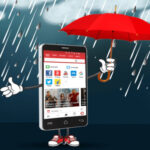Most iPhone chargers, whether they come bundled with the device or are sold separately, tend to be compact in design and appearance, typically consisting of a charging brick and a cable. However, beneath this simple exterior lie sophisticated components and a complex operating mechanism.
The charging brick for the iPhone employs various principles such as voltage transformation and reduction to regulate power output, ensuring a safe and stable charging experience without any risks of electrical faults or explosions.

Which cable and charger are best suited for each iPhone model? (Illustrative image)
The iPhone charging cable, also known as the Lightning cable (for older iPhone models), features an 8-pin connector. Newer iPhone 14 models use a high-speed Type-C cable. Besides facilitating charging, this cable also enables data, audio, and video transmission, seamlessly connecting your iPhone to iTunes.
**What Type of Cable Do I Need for My iPhone?**
There are primarily four types of iPhone charging cables: USB-C to USB-C, Lightning to USB-C, Lightning to USB-A, and Apple 30-pin to USB.
To determine the best-suited cable for your iPhone, it’s essential to identify your iPhone model, as different models may have different charging ports.
Here’s a breakdown of the cable types and their corresponding iPhone models, along with compatible charging bricks:
**1. USB-C to USB-C Cable**
Currently, only the iPhone 15 models utilize the USB-C to USB-C cable. This marks a significant shift from the older Lightning connector to the more versatile USB-C standard.

USB-C brings numerous improvements to the iPhone across various aspects.
The universal nature of the USB-C standard allows for the use of a single charging cable for multiple devices, enhancing convenience and reducing cable clutter.
**2. Lightning to USB-C and Lightning to USB-A Cables**
The Lightning to USB-C or Lightning to USB-A cables are compatible with all iPhone models ranging from the iPhone 5 to the iPhone 14 Pro Max.

A USB-C to Lightning cable will charge your iPhone significantly faster than a USB-A to Lightning cable.
If faster charging is a priority, opt for the USB-C to Lightning cable over the USB-A to Lightning variant. Additionally, consider the charging brick you intend to use. If you already own a USB-A charging brick, purchasing a USB-A to Lightning cable may be more economical.
**3. 30-Pin to USB-A Cable**

The original Apple 30-pin connector was used from 2007 to 2012.
The following iPhone models used this type of charging cable:
– iPhone 4 and 4S
– iPhone 3G and 3GS
– iPhone (1st generation)
**Which Charging Brick Should I Use with My Cable?**
When choosing a charging brick for your iPhone, there are a few considerations to keep in mind. Firstly, and most importantly, ensure that the charging brick has the correct USB port type that matches your iPhone cable. If you have a USB-C to USB-C or Lightning to USB-C cable, you’ll need a charging brick with a USB-C port. Similarly, if you have a 30-pin to USB-A or Lightning to USB-A cable, opt for a charging brick with a USB-A port.
The next factor to consider is the charging brick’s wattage. Higher wattage typically results in faster charging, but it also means a larger brick. For instance, a 5W charging brick will be smaller than a 20W one, and a 30W brick will be the largest and fastest of the three. Ultimately, the choice of wattage depends on your personal preference for charging speed.
Additionally, ensure that the charging brick is designed to work in your country. If you’re planning to travel, consider investing in Apple’s World Travel Adapter Kit to safely charge your iPhone and other Apple devices internationally without worrying about incompatible plug standards.
**Should I Buy Official Apple Accessories for My iPhone?**
While third-party chargers and cables for iPhones are widely available at lower prices, they may not always be safe or durable. Moreover, any hardware damage caused by using non-Apple accessories could void your iPhone’s warranty.
It is recommended to purchase official Apple accessories or those that are MFi-certified (Made for iPhone). MFi certification ensures that the accessories meet Apple’s safety and performance standards, providing peace of mind and maintaining your iPhone’s warranty.
_Source: VTC News_






































